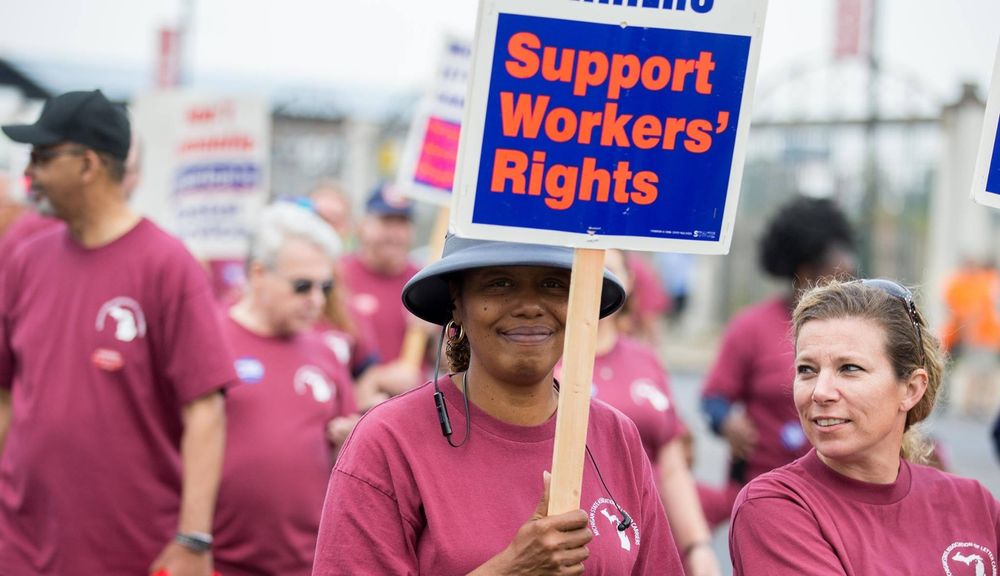Roots to Rights: Labor Day, the U.S. Labor Movement, and the Fight to Protect Workers
While it's easy to associate Labor Day with barbecues and a last hurrah of summer, the holiday is an opportunity to honor labor activists of the past and support those who continue to fight for workers’ rights today. In fact, the U.S. labor movement has been a driving force behind many of the workplace rights and benefits we often take for granted today.
Labor activists, often risking their own safety and well-being, advocated for shorter workdays, safer working conditions, and fair wages. The U.S. labor movement’s push for an eight-hour workday, a minimum wage, and workplace safety standards laid the foundation for the work-life balance we aim to achieve today.
Labor Unrest and a Holiday to Honor Workers
In the late 1800s, it was common for most industrial workers to work 12-hour days, seven days a week. Children as young as five or six worked in mines, mills, and factories across the United States. Working conditions were often dangerous and dirty, and deadly accidents were common. As the country’s dependence on manufacturing grew, trade unions emerged as a way for workers to join together and protest the unsafe conditions, long hours, and low pay. The country’s first Labor Day parade was held Sept. 5, 1882, when 10,000 workers marched in New York City.
Unfortunately, other demonstrations for workers rights at the time weren’t as peaceful. Many factory owners and others in power refused to yield to workers demands, and some reacted with violence to the rising influence of trade unions. In particular, the Haymarket affair in 1886, where police fired on striking workers, and the Pullman Strike in 1894, in which 70 people were killed nationwide, prompted the recognition of Labor Day as a federal holiday.
In an attempt to calm the labor unrest and repair ties with American workers, Congress made Labor Day a legal holiday in 1894. The national holiday signified the government's acknowledgment of the importance of the labor movement. Today, Labor Day is annually observed on the first Monday in September.
While individual unions were able to win concessions throughout the early 1900s, national labor protections weren’t adopted until President Franklin D. Roosevelt’s New Deal. The Fair Labor Standards Act in 1938 set a minimum wage, standardized pay for overtime work, outlawed child labor, and addressed workplace conditions. In 1940, an amendment to the Fair Labor Standards Act established a 40-hour workweek nationwide. Congress also passed the Social Security Act in 1935, establishing federal retirement benefits, unemployment insurance, disability benefits for injured employees, and other protections for those unable to work.

The Labor Movement as a Civil Rights Movement
In their commitments and vision, trade unionists have linked the priorities and interests of the labor movement with demands for racial and gender equality. In fact, unions often served as a way for marginalized groups to advocate for social change.
The Triangle Shirtwaist Factory fire in 1911, which claimed the lives of 146 garment workers, highlighted the dire need for improved safety regulations. In response, the International Ladies Garment Workers Union, one of the first U.S. unions to represent mostly women workers, and several prominent women activists pressured the state of New York to reform its laws to safeguard workers. One of the activists, Frances Perkins, became the first woman cabinet member, serving as the Secretary of Labor from 1933 to 1945.
In 1941, A. Phillip Randolph, head of the Brotherhood of Sleeping Car Porters, the largest Black union in the country, threatened to march 50,000 Black men to Washington to protest their exclusion from defense production jobs. In response, Roosevelt banned discrimination in defense factories and established a Fair Employment Commission to enforce his executive order.
In 1938, 21-year-old Emma Tenayuca, a Mexican American labor activist, organized women pecan shellers in San Antonio, Texas, to strike for better working conditions and a minimum wage. Other Latine-led labor movements continued to advocate for workers’ rights and civil rights, the most famous being the Delano grape strike from 1965-1970, led by César Chávez.
When the AFL and CIO merged in 1955, hundreds of thousands of Black trade unionists became part of an integrated labor movement. Randolph and others helped plan, organize, and fund Dr. Martin Luther King’s 1963 March on Washington for Jobs and Freedom, where he delivered his “I Have a Dream” speech. The Student Nonviolent Coordinating Committee (SNCC) and the Congress of Racial Equality (CORE) also supported Chávez and his struggle for farmworkers’ rights.
Inclusivity and Diversity: A Modern Labor Movement
Recent headlines prove that today’s labor movement is still fighting for workers rights, and many priorities are similar to those of a century ago. Today’s workers are striking for fair wages and the right to organize, but they also are demanding job protection in the face of technological advancements like artificial intelligence. The contemporary labor movement has also embraced the values of diversity, equity, and inclusion. Organizations like Pride at Work, the Labor Council for Latin American Advancement, and the Asian Pacific American Labor Alliance champion the rights of LGBTQ+, Latine, and Asian American workers, addressing ongoing and evolving workplace challenges.
As you commemorate the holiday, you might consider ways to learn about the history of the labor movement, honor the sacrifice and passion of past activists, and learn about ongoing struggles for worker protections. If your company has an internal newsletter, outline the history of Labor Day, highlight your organization's efforts to foster an inclusive work environment, and mention any resource groups supporting workers' rights. Encourage employees to share personal or family anecdotes related to labor activism. You might also consider engaging with groups that advocate for workers' rights. Organizations like the Economic Policy Institute publish reports that shed light on contemporary labor issues, offering valuable insights for both employees and leaders.
Remember, Labor Day is more than just a three-day weekend; it's a testament to the hard-fought battles that have shaped today's workplace. For those who want to know more about the U.S. labor movement, we’ve included a list of resources.
Movies and documentaries
- Norma Rae
- North Country
- Salt of the Earth
- 10,000 Black Men Named George
- Northern Lights
- 9 to 5: The Story of a Movement
- Cesar Chavez
- American Dream
- The Hand that Feeds
- Where do you Stand? Stories from an American Mill
Books
- Beaten Down, Worked Up
- There is Power in a Union
- A History of America in Ten Strikes
- Going Down Jericho Road: The Memphis Strike, Martin Luther King’s Last Campaign
- The Crusades of Cesar Chavez
- In a Day’s Work: The Fight to End Sexual Violence Against America’s Most Vulnerable Workers
- Our History Is the Future: Standing Rock Versus the Dakota Access Pipeline, and the Long Tradition of Indigenous Resistance
- One Fair Wage: Ending Subminimum Pay in America





